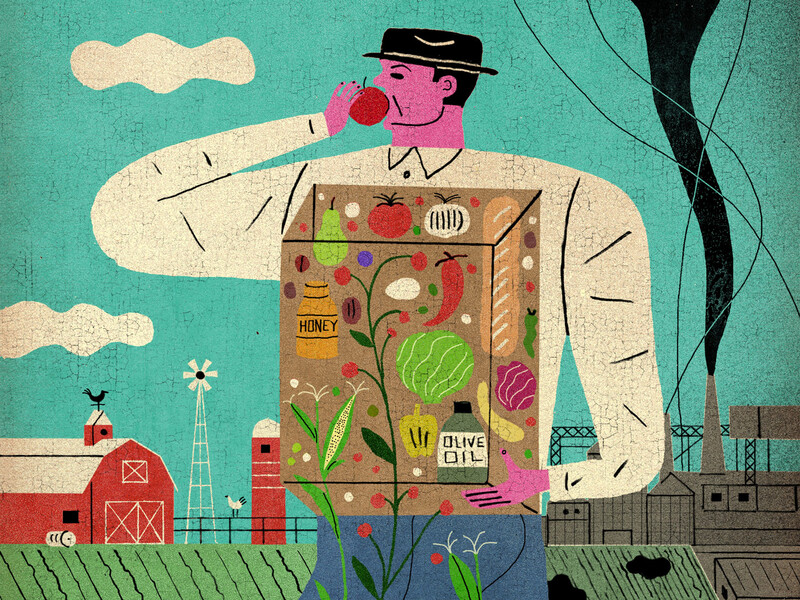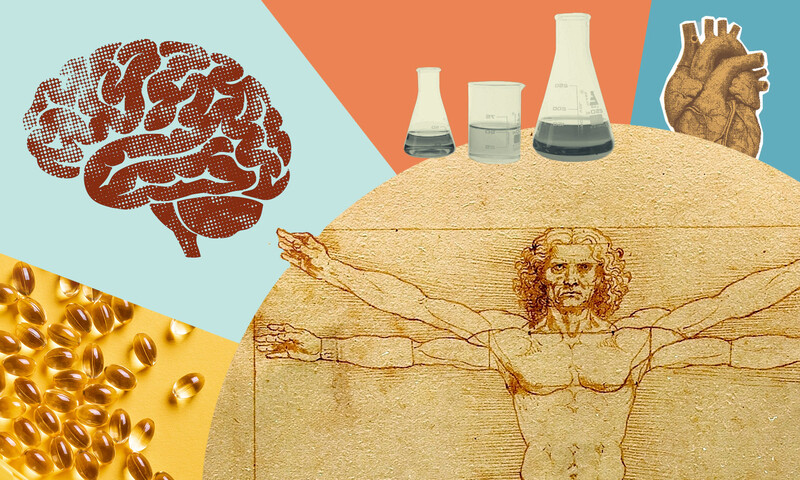If you’ve experienced hay fever for the first time recently or noticed your symptoms getting worse with each passing year, you’re not alone. Physicians say that the past few allergy seasons in the US have been unusually severe, with record numbers of people seeking treatment for persistent runny noses, sneezing, and itchy eyes.
“Outdoor allergies are certainly becoming more prevalent,” says David A. Gudis ’03CC, an ear, nose, and throat doctor at Columbia University Irving Medical Center. And hay fever, which occurs when the body’s immune system overreacts to the pollen produced by flowering plants, can be quite serious, he says, “causing sleep problems, difficulties at school or work, social challenges, and even anxiety and depression. For many people, it’s more than just a nuisance.”
So, what is behind the uptick in cases? Columbia experts say that a multitude of environmental and social factors are at play, but that climate change is certainly a factor. Studies have shown that in many parts of the world, including the Northeastern US, people are now being exposed to more pollen because rising temperatures and an excess of CO2 in the atmosphere are causing some of nature’s most prolific pollen producers, like ragweed and wild grasses, to grow larger and more robustly, to expand their habitats, and to flower for more months during the year.
“Weeds and grasses that generate lots of pollen tend to be physically resilient, genetically diverse, and extremely adaptive,” says Lewis Ziska, a professor of environmental health sciences at Columbia’s Mailman School of Public Health.
Last year, Ziska published a comprehensive study showing that pollen season in North America now lasts three weeks longer than it did in 1990 and generates about 20 percent more pollen. “People are breathing in pollen for longer periods of time, and they’re exposed to more of it,” he says, noting that pollen season in the Northeast now stretches from March to November, with the main producers being trees in the spring, grasses in the summer, and ragweed in the autumn.
Climate change is also altering the physiological structure of plants in ways that can make them more allergenic. In one study, Ziska and his colleagues discovered that ragweed plants are responding to Earth’s carbon-rich atmosphere by producing pollen grains that are covered in more of the spiky surface proteins that the human immune system mistakes as signs of danger. Other research groups have since confirmed that some tree pollens are being similarly altered.
Thicker clouds of pollen wafting over our homes, parks, and offices could have profound public-health ramifications. Besides causing hay fever, pollen grains have been shown to exacerbate asthma, a condition that is typically triggered by indoor allergens like dust mites and animal dander but is sensitive to a wide range of airborne irritants. And last year, in a study using medical and environmental data from thirty-one countries, Ziska and his colleagues showed that in weeks when pollen concentrations were especially high in 2020, more COVID-19 infections were reported.
“It seems that the presence of pollen in the respiratory tract causes subtle changes to cells that can make them more susceptible to viral infection, even in people who show no signs of being allergic to pollen,” says Ziska, who notes that additional research is needed to confirm the finding.
Ziska hopes that his team’s work will ultimately lead to the development of computer models to predict how future climate conditions may influence airborne pollen concentrations and thus human health in particular regions of the world. “We know that warming temperatures are enabling ragweed and other species to expand northward into the upper Midwest, Canada, Eastern Europe, and other parts of the world, causing longer and more intense pollen seasons,” he says. “But more research is needed to predict how people in these regions will be affected. For example, we need to better understand how interactions between air pollution and pollen can affect human health.” Ziska says there is also an urgent need to improve pollen monitoring, both by adding more collection stations and by automating the process of identifying and counting individual pollen grains, which are tasks currently done by hand. “Distinguishing between pollen species is difficult, time-consuming work, and there’s currently a single person doing this for all of New York City,” he says. “We need to create artificial-intelligence systems to handle some of it.”
Hay fever, or seasonal allergic rhinitis, as it is medically known, was first described by the tenth-century Persian physician Rhazes but did not become common until the late-nineteenth century, and then only among the upper classes in Europe and the United States. Today, it is most prevalent in industrialized nations, especially in non-rural settings, where it afflicts up to 40 percent of children and between 10 to 30 percent of adults. This has led many scientists to believe that the condition’s ubiquity is an unintended consequence of modern standards of sanitation and cleanliness, particularly in the context of childrearing. According to this popular theory, known as the hygiene hypothesis, shielding young children from bacteria, viruses, and other pathogens can backfire by depriving the immune system of crucial on-the-job training and hindering its development.
“For most of human history, children encountered vast amounts of microbes from a very young age, and these early exposures seem to be critical for teaching the immune system what types of substances to attack and what kinds to ignore,” says Donna Farber, a Columbia immunologist and a proponent of the theory. “When the quantity or variety of these exposures is altered, the immune system can become dysregulated and fail to function properly later on.”
Hay fever is just one manifestation of an overly sanitized upbringing, experts say. Studies have shown that asthma and autoimmune disorders like lupus and rheumatoid arthritis, which occur when a confused immune system attacks the body’s own tissues, disproportionately strike the same well-off urban and suburban populations that are highly prone to pollen allergies.
“Children who grow up on farms or who have lots of siblings — conditions that tend to increase one’s exposure to germs — have been found to have more robust immune systems compared to those raised in cleaner environments,” says Farber, who studies how the immune system develops over a lifetime.
None of this means that children should be licking handrails or neglecting to wash before dinner. Modern hygienic practices do successfully protect kids from serious disease, after all. And Farber explains there may be a limit to how much we can protect ourselves from immunological disorders through our individual lifestyle choices, as our vulnerability to such conditions is partly the result of fundamental changes that the human body has undergone over the past two centuries. She points out, for example, that the part of our immune system that is prone to attacking pollen and other allergens evolved originally to combat parasitic worms that nearly all humans once had in their guts. “Now, this part of our immune system is underutilized and reacting to other things inappropriately,” she says. “If we still had worms, it’s possible that fewer of us would develop seasonal allergies and other immunological problems. But this is the trade-off we’ve made.”
There are reasonable steps that parents can take to promote their children’s immunological health, though. Farber recommends that parents encourage kids to spend time outdoors every day, play in the dirt, pet animals, and socialize regularly with friends in person. “You don’t want to take crazy risks, but you don’t want to prevent a child from coming into contact with common bacteria and viruses because the immune system needs those exposures to develop healthily,” she says. “In my own team’s research, we’ve observed that there’s a brief window of time, from infancy until about age six, when the immune system is extraordinarily dynamic and primed to form strong memories about the different kinds of microbes it’s encountering. When this process is successful it is breathtaking to see. Yet for the immune system to develop properly, we have to resist the temptation to interfere with it too much. We have to trust the body to do what it knows how to do.”
For those condemned to months of sneezing, wheezy, and sniffling each pollen season, there are three main paths to relief, according to Gudis, the CUIMC otolaryngologist.
“The first is to minimize your exposure to pollen, which is difficult to do, but not impossible,” he says. “I recommend that allergy sufferers keep their windows closed when pollen concentrations are at their peak, use air conditioners or HEPA air filters that can capture tiny particulates, and bathe or shower each night before bed. Pollen grains are minuscule and will stick to your hair, skin, and clothing, and you want to wash them off of you before they contaminate your bedding.” Nasal irrigation devices, like neti pots, are helpful in washing out allergens, he says. “You also should limit your exposure to smog and other forms of air pollution, because once the immune system is primed to react to one airborne allergen, like pollen, other irritants can trigger the same inflammation. So it’s possible to experience allergic symptoms even in the absence of pollen.”
The second strategy for beating seasonal allergies, Gudis says, is to take medications like nasal steroid sprays or anti-histamines, which block the cascade of inflammation that your body dispatches to fight off pollen. “The newest generation of anti-histamines, which include Claritin and Allegra, are particularly effective,” he says. “And they don’t cause as much drowsiness as some of the older medications, like Benadryl or Dramamine, which can really knock you out.”
If over-the counter and prescription medications don’t work, Gudis says, the next line of defense is to get tested by an allergist to identify the specific allergens you are sensitive to, and to then consider receiving immunotherapy shots (or oral drops) that gradually retrain the body to respond more calmly. “Allergy shots work by exposing the body to progressively larger doses of the exact things you’re allergic to,” he says. “This teaches one part of the immune system to dispense with those allergens quickly before the rest of the system launches a full-fledged inflammatory response against them, which can significantly reduce the patient’s symptoms.”
In recent years, major improvements have been made in the accuracy of allergy tests, as well as in the efficacy and safety of immunotherapies, according to Gudis. He says that researchers are also making progress in developing new therapies for some of the most severe, treatment-resistant forms of allergic rhinitis, which can be associated with sinus problems and the formation of obstructive nasal polyps, in addition to other medical complications.
“One promising area is in the development of monoclonal antibodies that are designed to inhibit the body’s inflammatory response against allergens,” says Gudis, who notes that several such medications, part of a class of novel therapies called “biologics” because they consist of natural biological entities, are currently in clinical trials for use with people with debilitating seasonal allergies. “So while the public-health threat posed by allergies is growing, we’re also devising more powerful and individualized therapeutic options.”
This article appears in the Fall 2022 print edition of Columbia Magazine with the title "Pollen Problems."



